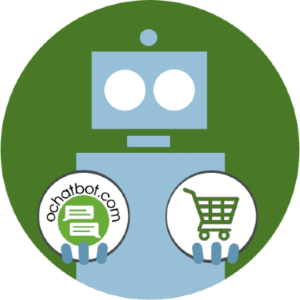Interacting with a chatbot or a live chat service on a website has become as common as speaking with a salesperson in a store. But how can you tell if you’re talking to a programmed assistant or a human being? This is a question that customers wonder and businesses need to account for if they’re opting for AI support. Understanding the nuances of these interactions can enhance your experience and ensure customers get the help they need efficiently.
Who exactly are you talking to?
AI is not just one system; it comes in a variety. However, most chat systems you see on eCommerce sites are of two varieties:
Scripted Chatbots: These are automated conversationalists designed to mimic human-like interactions based on a mixture of predefined rules and artificial intelligence (AI). These are the types of bots that are triggered by keywords.
Live Chat: This service connects you with a human representative in real time. It stands out for its personalized touch, offering users direct access to someone who can understand complex queries and provide comprehensive responses. The interaction may be slightly slower, reflecting the time a human takes to type or research answers, but it’s invaluable for detailed and nuanced support.
There is a third type that is quickly gaining popularity after the release of OpenAI’s ChatGPT: Generative AI chatbots. These chatbots utilize the latest AI technology to answer questions without over-reliance on pre-defined responses. To put it simply, the chatbot answers from a knowledge base or “brain”. Rather than only answering based on certain keywords, the bot utilizes machine learning to comprehend a wide variety of human speech.
Taking to a chatbot will be similar to a human, but chatbots are powered by artificial intelligence with logical rules. They are made with frequently asked questions and answers, so they can have natural unrestricted conversations. Chatbots are made to provide information to reduce live calls and provide eCommerce product assistance to quickly get the product that best suits the user.
Users can enter any question, but the responses are limited to the answers that are programmed into the chatbot. The chatbot searches the user’s question and the programmed keywords to find a match to provide the correct response. If the chatbot does not find a keyword in the user’s response it will not be able to give a relevant answer. In this case, the chatbot “hits the rails” and provides a “fallback” response explaining to the user that it does not understand the question asked. This “fallback” provides some options to either retry typing the question in a different way or select a button option to connect to a live chat, or a phone and email contact.
Chatbots are usually only able to understand the words that are programmed into their system, so misspelled words are often not picked up by the chatbot unless it is added. The chatbot will then respond with the “fallback” response. If you see this response you are most likely talking with a chatbot.
Live chats are human-powered by the company’s customer support team. Typically, when connecting with a live chat, the user has to enter their name and the response are more delayed. With this chat there are humans on the other side answering the questions that you enter. When asking a live chat a question they may not know the answer to, they will say something similar to, “give me a moment to check on that”. Live chats are needed in more complex situations where a chatbot may not be able to give a sufficient answer.
In many cases, if the chat user asks if the chatbot is a bot, the response should acknowledge that it is. If it is a live chat, they will reassure the chat user that they are a human representative.
However, some bots are a bit more sneaky, so here are some other tips to keep in mind to help you discern between a chatbot and a human:
So, how do you know whom you’re chatting with? Here are a few indicators:
- Immediate Responses: Chatbots tend to reply instantly and with consistent formatting, whereas human responses might take longer and vary in tone.
- Complexity and Context: Humans can understand complex nuances and context better than chatbots. If the conversation involves intricate issues or emotional undertones, a human agent is likely at the other end.
- Fallback Responses: Chatbots may revert to generic answers if they can’t understand a query. These fallback responses are designed to guide you back on track or offer alternative ways to get help, such as contacting a human representative.
The Future of Digital Interactions
As AI continues to evolve, the line between chatbot and human interactions will become increasingly blurred. However, understanding the distinctions and knowing what to look for can make your digital communication more effective and enjoyable. Whether you’re talking to a chatbot or a human, the goal remains the same: to provide you with the best possible support and experience.

Generative and Scripted AI to engage shoppers in conversational eCommerce. Create happy customers while growing your business!
-
5% to 35% Increase in AOV*
-
20% to 40% Increase in Revenue*
-
25% to 45% Reduction in Support Tickets
WE GUARANTEE RESULTS!
*When shoppers engage with Ochatbot®
- Best AI Advertising Tools in 2024 - March 27, 2024
- Best AI Art, Graphics, and Image AI Tools in 2024 - March 27, 2024
- Best AI Audio & Speech Generator Tools in 2024 - March 27, 2024
